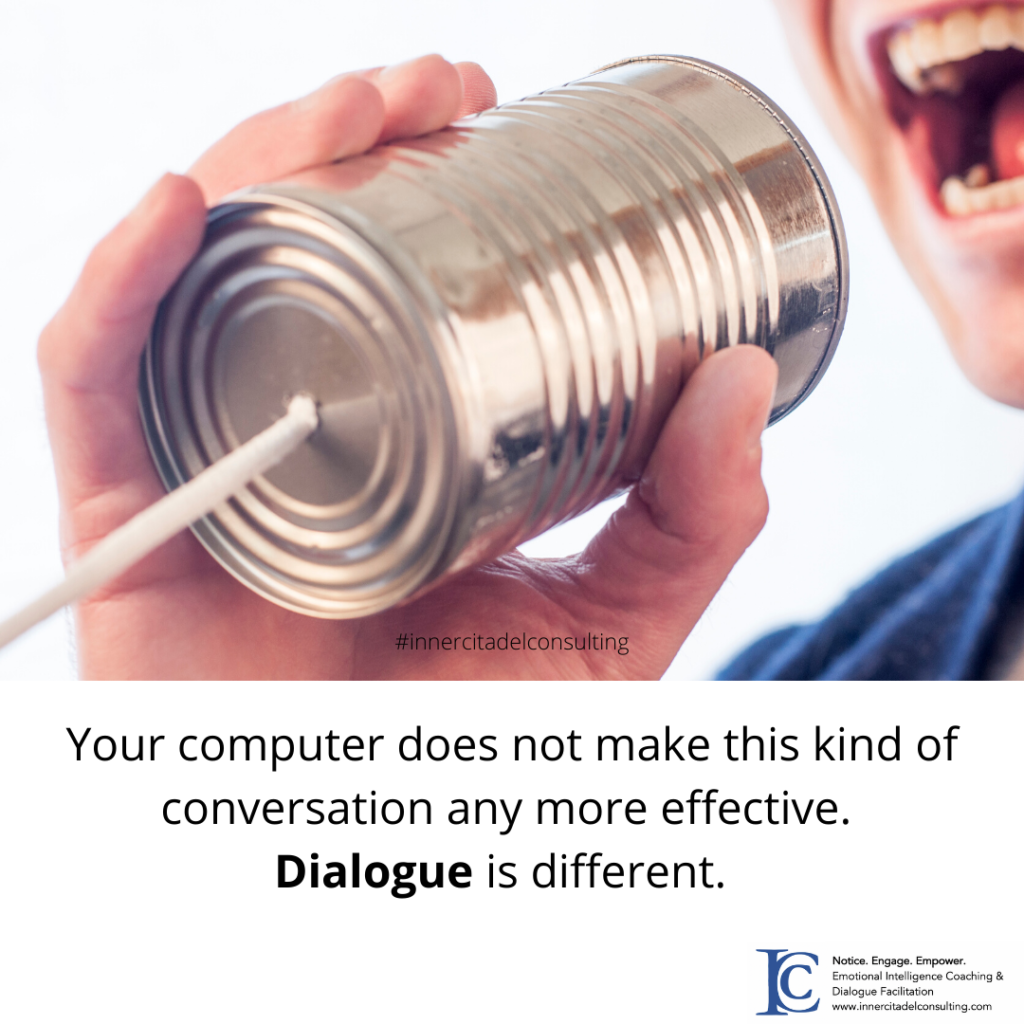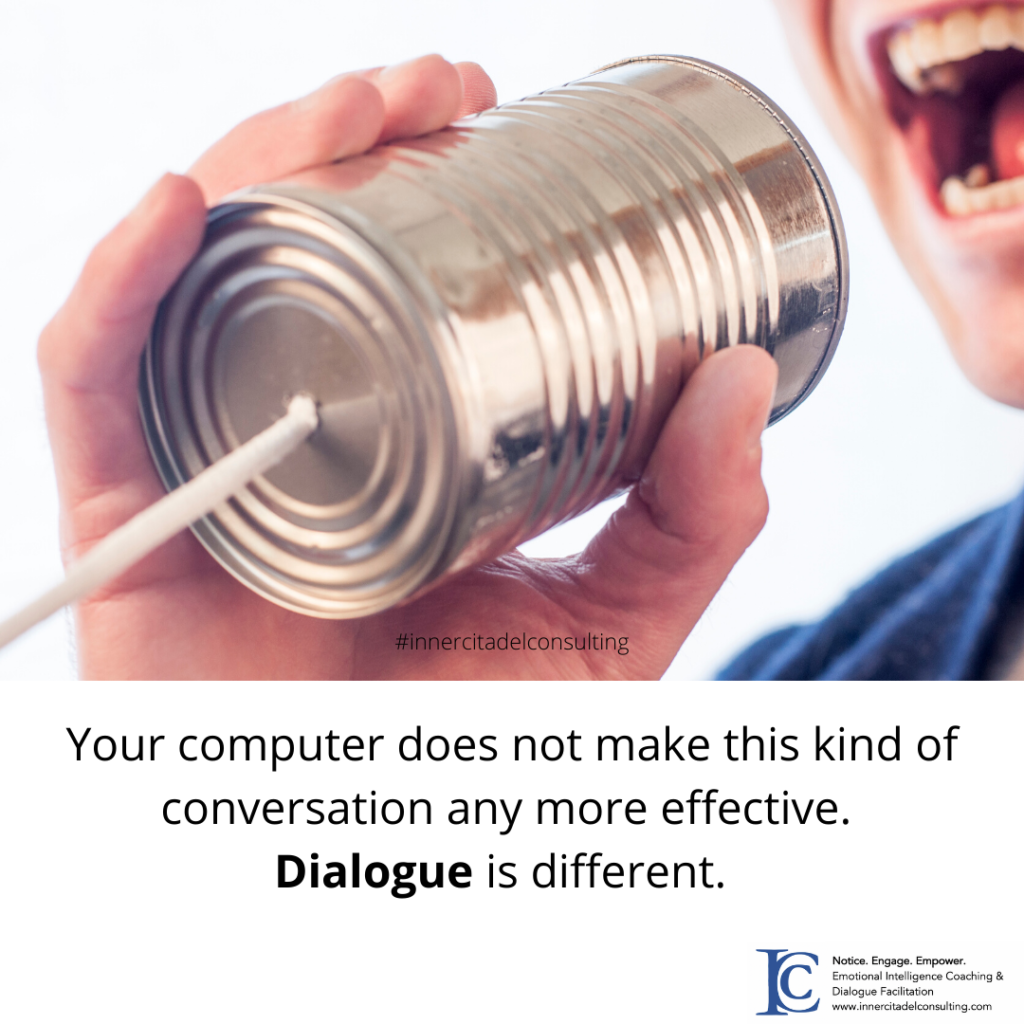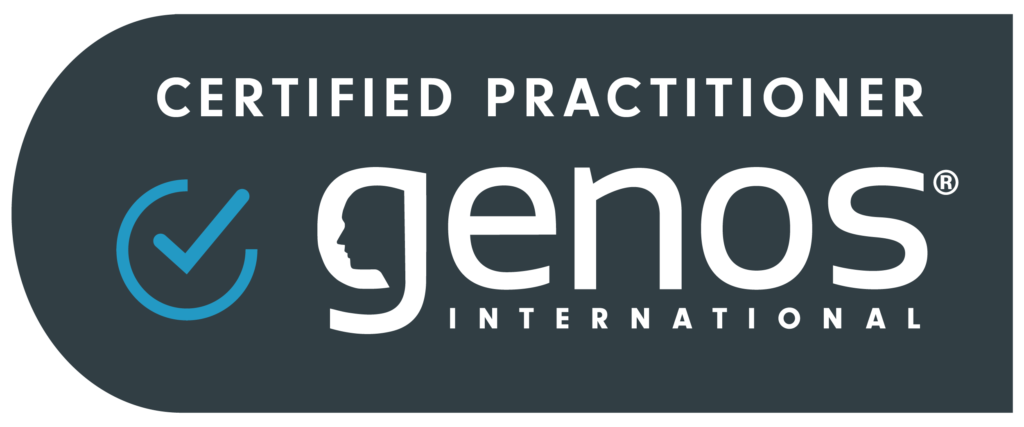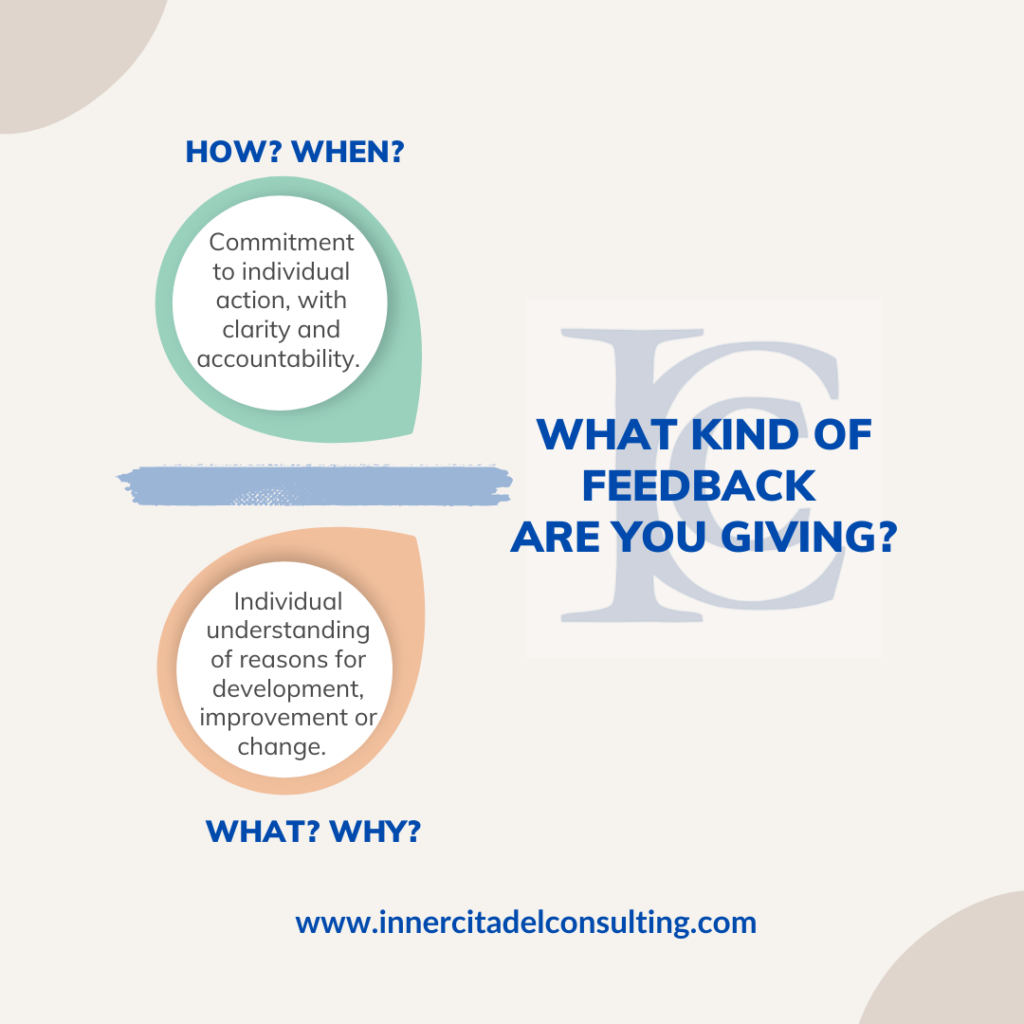I was at two fantastic business events this week, both celebrations of a sort that were also networking opportunities. I find networking opportunities quite difficult. I know that I have unhelpful ideas about what success might be. I am fairly introverted and also very curious, so I end up having good, long conversations with very few people. I also often feel awkward explaining what I do. I’ve worked with some amazing people at the Vermont Center for Emerging Technologies to have great short statements ready for the dreaded, “So, what do you do”. But I was reflecting after these events that some of the things I do really are hard to talk about quickly.
The hardest thing to talk about is facilitation. “So, what do you do?” “Well, if you have a leadership team who can’t communicate well and aren’t making critical decisions together… I help with that.” “Well, if you feel like you’re losing your best new hires to your most difficult managers … I help with that.” “Well, if you think your people are avoiding conversations they need to have because of conflict … I help with that.” The most curious people say, “Cool! I’ve been there! But how do you help with that?”
Facilitation vs. Mediation
Part of why facilitation is hard to talk about is that people often confuse facilitation, mediation and arbitration. And no wonder! Even people in the business will use these terms, or mash them together, in an effort to help communicate what they do. But facilitation is not mediation is definitely not arbitration. The most mashed together are mediation and facilitation (facilitative mediation, anyone?).
Mediation usually occurs as part of a formal process that is supposed to lead to a specific outcome that is acceptable to all sides. For example, a mediator might be engaged to lead two parties to an agreement on a legal dispute of some kind. We might think of mediation as a process by which a neutral person (the mediator) helps the people in conflict negotiate an outcome that everyone can live with. Sometimes this is so that they can avoid arbitration by a third party that they will have to live with no matter what. And sometimes this is so that they can avoid a (costly) process, like arbitration, in which there will likely be one winner and one loser.
Facilitation involves a neutral third party (people like me) helping others communicate about something they’re having trouble communicating about. The outcome of facilitation is effective dialogue that will inevitably lead to a desired result. The source of the communication trouble might be a difference in cultural perspective or in behaviors – and it might be a conflict or contract dispute. The basic premise of facilitation is that if you can’t effectively communicate with another person, you will never be able to reach the results you desire. The best facilitation does not end with compromise or consensus, it ends with understanding and a way for everyone to win.
Process and result
For me, then, the key difference with facilitation comes down to the thing at the end of the process. If there only needs to be a product (a document, a revised contract, a performance improvement plan, etc.) then I would tend to think about that in terms of mediation or even coaching. If there needs to be an understanding, a transformation, or a deeper connection so that, for example, a team can work together better, then I think in terms of facilitation. We might (and probably should) develop a product after we reach the understanding or transformation to help support continuing success. But it truly is understanding we’re after first and foremost. If you care only about the result and not the path to the result, facilitation is not for you. But if you’ve been skipping the step of creating understanding and your actions plans have consistently been failing, facilitation is for you.

I have been fortunate to have had some training in three different kinds of facilitation, multi-partial facilitation, non-violent communication, and convergent facilitation. Each is facilitation in the sense I described above, a movement toward shared understanding. But each produces a slightly different kind of understanding and each leads to a slightly different kind of result. I’ve chosen to seek training in these modes of facilitation because they seem to me to be what organizations and teams are missing these days. The long pandemic definitely affected how people connect and communicate. And in many of the organizations I work with it also infected teams with chronic stress, disorganization, empathy-fatigue, and reactivity. “Cool! I’ve been there! But how does facilitation work?”
Multi-partial Facilitation (Intergroup Dialogue)
Multi-partial facilitation is tilted toward helping people communicate across difference. In this model, the facilitator is an advocate for the process of engaging deeply and authentically about different ways of seeing the world or work. The facilitator is multi-partial (not impartial!!) in the sense that her job is to value all perspectives people might bring to a conversation equally, to support the safe sharing of those perspectives, and to cultivate an attitude of non-judgment. Most of the time, this means working to promote and support narratives and experiences other than the dominant ones. Multi-partial facilitation seeks to bring all voices into balance and that means we sometimes need to empower the marginalized or quiet voices.
Multi-partial facilitation revolves around social identity (by the way, identity lies at the root of many serious conflicts). With self-awareness and self-reflection, multi-partial facilitation leads participants to examine the dominant narratives and widen their understanding of experience, trying to move participants past us/them narratives and promoting the experience of marginalized and non-dominant perspectives. Hateful and harmful perspectives are different and do not have a place in most kinds of facilitation. In multi-partial facilitation we focus most closely on the equal and open expression of human experience so that participants can understand each other, seeing where they are different and where they are the same. Sometimes that means hearing things that are uncomfortable, that you disagree with, and that you don’t (yet) understand … especially if you are part of the dominant social system. The big SHRM push this year on civility in the workplace could take some tips from multi-partial facilitation principles.
This might sound a little touchy-feely or naïve to you, but the outcomes and results of multi-partial facilitation are very valuable for teams and organizations – not as a sideline benefit but in hard currency. For example, any change process is difficult, not just because it is hard for people to learn new behaviors, but mostly because it is hard for people to see why they should change. And culture change can become the organizational equivalent of a money pit. We can support change, lay the foundation, by establishing understanding and trust first.
Simple, not easy.
These problems are acute among higher education teams, for example, where people are especially committed to their work through their core values and social identities within academia. When change is needed, resistance comes because people can’t align the new system or process or structure with their core values. But when people in conflict over change can hear and understand other perspectives, they can move the dialogue to the level it needs to be to actually makes things happen.
At one of the institutions I worked with, the phrase “This is best for the students” became the way to end conflict (poorly) because it was often the only value where there was alignment, and to disagree with that statement in public put you directly in the path of the dominant culture. As you can imagine, that phrase got weaponized pretty quickly and used most frequently by the dominant groups to silence differing views. But if everyone involved could have safely shared all their values and perspectives, we could have got to better understandings and more useful solutions a lot sooner and with less chest-beating, anger, alienation, and misunderstanding. Real understanding is the stable ground on which organizations can build change and new ways of doing things.
What will you do now?
Who do you have trouble understanding in your workplace? Who do you feel does not understand you? How does this lack of understanding cost you or cause trouble and conflict? If you’re curious about how facilitation could help your teams, let’s connect!
Come back next week for the other two models, non-violent communication and convergent facilitation!






